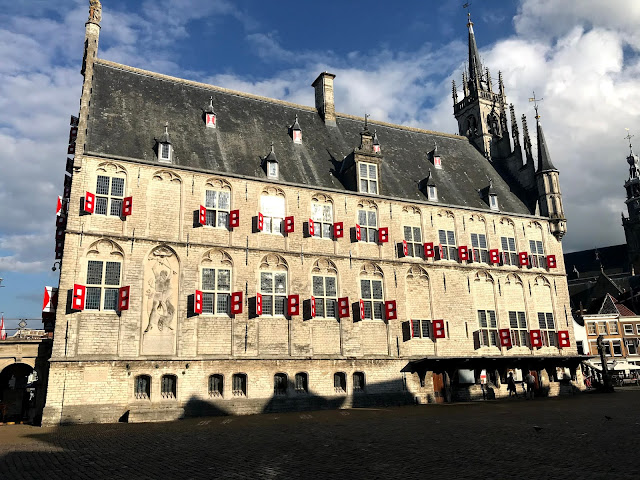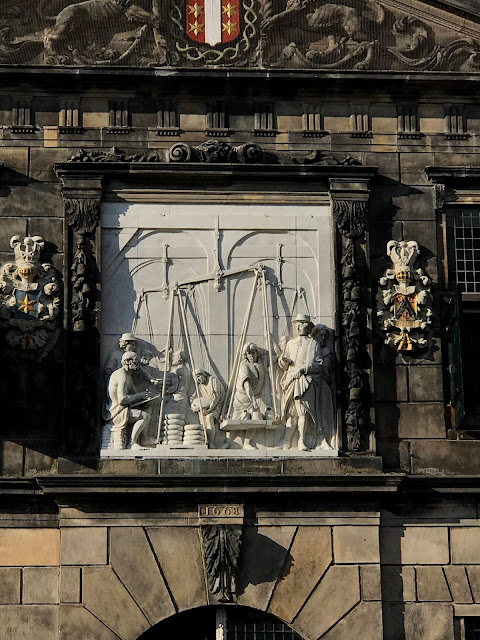
After our last zone conference finished, we hurried over to the Royal Delft Company headquarters in the city of....Delft, of course. We didn't have much time to see their production and learn of their story but it was a lot of fun. They were founded in 1633 as the Dutch were master merchants providing popular china when supplies of Chinese porcelain became tougher to purchase and too expensive.
The signature "delft blue" is what they are most known for.
Delft tiles replicate the famous Rembrandt painting of the "Night Watch".
This artist was painting on the patterns seen on the pottery before they were fired and glazed.
We began our last day in the Netherlands by visiting the temple in the Haag.
This temple was still closed due to the pandemic.
The Corrie ten Boom House is now a museum but during World War II it was where her father and her siblings lived above their watchmaking shop. The ten Boom family were Dutch protestants who risked their own lives to hide, transport and protect Jews being sought by the Nazis who had occupied the Netherlands. They did so much good before they were eventually arrested and taken into custody.
Corrie was a single woman and the first Dutch female watchmaker. Amazingly, even though her sister and father perished in concentration camps, she survived the infamous Ravensbruk camp and returned to the city of Haarlem where she was from. She eventually wrote a well-known book, The Hiding Place and began sharing her testimony of Jesus Christ, forgiveness and charity.
The tour was free, conducted by dedicated Christian women who bore humble testimonies of the Savior that really filled our hearts.
The spirit was so strong as we went from room to room and learned of their sacrifices.
The people who were being hidden would crawl through the bottom shelf area on the left and then stand behind the brick wall when the Nazis came searching for the Jews. The false wall was built specifically for that purpose. Thus the name, The Hiding Place.
We learned so much about how important windmills were to the economy at the Windmill Museum.
They were used to grind grain, mill lumber and pump water. Many are still in use today.
This map shows the locations of existing windmills today in their country.
The windmill that we visited still grinds grain today and the drawings show how that is done.
This wheel is used to turn the blades toward the wind to be more productive.
Pointing to the spot where she had climbed up on one of the blades before the tour guide got
nervous and asked her to step down.
We couldn't leave Gouda without our very own stash of Gouda cheese. So many flavors, so delicious!
Just for the record, the pronunciation is not as we would normally say it. If you are Dutch, then it sounds more like "Howda" rather than "Gowda." We are always learning!

































































